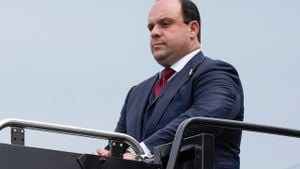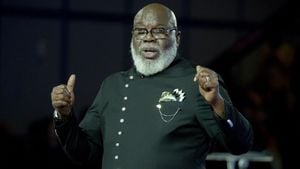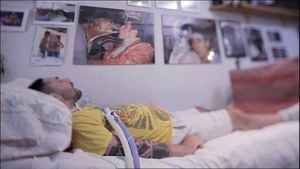NASA’s recent announcement about the fate of astronauts Butch Wilmore and Suni Williams has stirred both relief and concern among space enthusiasts and aerospace experts alike. These veteran astronauts, who embarked on their mission aboard Boeing’s Starliner spacecraft on June 5, 2024, were initially scheduled for just eight days at the International Space Station (ISS). Unfortunately, due to significant mechanical issues with their spacecraft, their return has been delayed until February 2025. This development marks yet another twist for Boeing's troubled Starliner program and has heightened scrutiny over its future operations.
The decision stems from numerous technical failures plaguing the Starliner since its launch. Reports have indicated troubling signs like helium leaks and thruster problems, which prompted NASA to prioritize the safety of its astronauts. Consequently, instead of returning home on their original ship, Wilmore and Williams will be brought back to Earth by SpaceX's Crew-9 mission onboard their Crew Dragon spacecraft.
NASA confirmed these plans on August 24, stating, "Spaceflight is risky, even at its safest and most routine. A test flight, by nature, is neither safe nor routine. The decision to keep Butch and Suni aboard the International Space Station and bring Boeing’s Starliner home uncrewed is the result of our commitment to safety,” according to NASA Administrator Bill Nelson. This emphasis on safety resonates with many who closely monitor manned space operations.
Wilmore and Williams now have to extend their time on the ISS until 2025, marking nearly eight months of living and working aboard the orbiting laboratory instead of the planned eight days. The information has led to mixed emotions, from admiration for their resilience to questions surrounding Boeing’s capabilities as they navigate this significant setback.
The delays caused by the malfunctioning Starliner have raised eyebrows, especially since NASA selected Boeing back in 2014 as part of its ambitious Commercial Crew Program, which aimed to provide safe and reliable human transport to and from the ISS. With more than $4 billion invested and two previous uncrewed test missions conducted successfully, many industry watchers are beginning to express skepticism about Boeing's ability to regain its footing.
“Boeing has changed since the contract for Starliner was awarded almost ten years ago,” remarked Todd Harrison, a space industry analyst, noting the company has shifted focus and resources away from human spaceflight. This perspective highlights the challenges Boeing may face learning to adapt and innovate within the rapidly changing aerospace sector.
Meanwhile, Wilmore and Williams have continued their work on various research projects aboard the ISS, adapting to their extended stay by maintaining their routines. Reports indicate they even find joy and solace in their stunning views of Earth from the station, as noted by Wilmore’s family who has frequently communicated with him via video calls. “He gives us a lot of Earth views; I especially like seeing the sunset,” expressed Daryn, one of Wilmore’s daughters. Such family connections are invaluable during unusually long missions, serving to mitigate the isolation of spaceflight.
NASA’s choice to utilize SpaceX for the astronauts' return instead of its partner Boeing has opened up discussions about the practicality and reliability of relying on multiple private companies for space travel. While SpaceX has conducted several successful crewed missions with its own Dragon spacecraft, Boeing’s struggles with Starliner significantly complicate its standing within NASA's plans.
The Crew-9 mission is scheduled to launch on September 24, 2025. Upon its arrival at the ISS, the mission team members will facilitate the transfer of Wilmore and Williams back to Earth, marking what could be both a successful rescue and significant turning point for the SS’s success.
Boeing's Starliner will return to Earth independently as part of its uncrewed test flight, clearing the way for Crew-9 to dock. NASA hopes this return flight can yield valuable data for assessing the systems of Starliner, enabling corrections necessary to gain certification for future crewed flights.
Even amid challenges, both astronauts remain focused on contributing to the continuous experimentation and tech testing at the ISS. Their work, though prolonged, serves as part of NASA’s broader strategy to prepare for more extensive missions, such as eventual journeys to Mars.
The question on everyone’s mind is, will Boeing be able to recover from this setback and offer the necessary solutions to support human spaceflight? For now, both Wilmore and Williams' safety remain NASA's top priority as the agency navigates the complex realities of public-private partnerships within its current and future missions.
The events surrounding the Boeing Starliner program may serve as both cautionary tales and opportunities for improvement within the space industry. Both NASA and Boeing must work collaboratively to regain confidence not only from each other but also from the general public who watches closely to see what’s next as they press on toward the challenges awaiting us beyond the stars.



